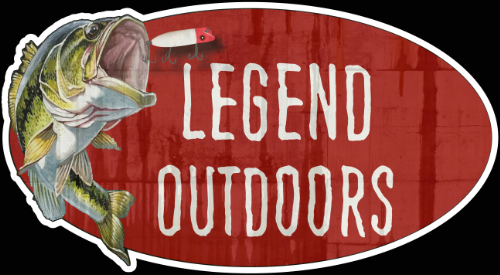The ice has left the lakes and ponds and the bright sunny days are starting to warm up their waters. The bass are on the move and soon the big girls will be up on the beds while the males cruise the inside edges of the weeds.
The magic time, however, is just beginning. The pre-spawn period is when these fish are really starting to get active with the warming water and the longer days.
Spring is typically a transition time of year for the lakes and ponds. A time when the water temperatures are beginning to rise and the weed growth is still very sparse and small.
These pre-spawn bass are not going to travel quickly to chase down food. So being opportunistic feeders this time of year, the bass is going to take advantage of the food source that presents itself as the easiest target.
As a fisherman it is your goal during this pre-spawn time to locate fish and then present an offering that will trigger that fish to strike. Sometimes out of hunger but much more often out of reaction.
This is where a good crankbait comes into play. Crankbaits can be fished shallow, deep, or anywhere in between. The versatility of this bait is only limited to the person who fishes it.
You can choose big lipped baits and bang them into stumps, rocks, or dig the sand with them, or run a shallow runner over the tops of the newly forming weeds. Spro has come out with the new Rock Crawler this season that is sure to take some big bass this year. This bait is a fast moving, deep diving, rock banging type of bait.

Choosing your presentation to match the conditions is a matter of using your electronics to give you the best idea or cover and bottom composition. You can also use your electronics to find the baitfish pods and adapt to the forage when choosing your diving depth, size, and color of crankbait.
Your water clarity will also dictate your choice of bait. Dirty water calls for a bigger profile bait and often a brightly colored one as well. Clearer water will lead you down the path of a more natural pattern of color.
These pre-spawn fish are feeding off of any available forage base that the lakes will have. Shad is a big part of their diet, but in the northern region shiners tend to be a more available food source. However, don’t forget about the newly emerging crayfish. The bass are finding these in many areas and will ignore a minnow presentation and be more aggressive given a crayfish color pattern.
Given the low water temperatures and the fact that the fish’s metabolism has slowed, present the bait in a fashion that will offer a target to that fish over a longer period of time. Methodical retrieves with pauses will put the bait at the right depth and will keep it in the strike zone much longer.
Don’t be afraid to bang the bait off of the rocks and other structure that you may encounter. The heavy vibration from the rattles in these baits stimulates the lateral line of the fish. Often times if you bring that bait close enough to a bass it will strike out of instinct alone. This is commonly referred to a reaction strike. The bass saw and felt the bait and its reaction was to strike without hesitation.
Having the right bait, right color, and right retrieve are all key players when fishing pre-spawn fish. Keying in on their locations is plays a huge roll in your success as a crankbait fisherman.
Pre-spawn bass are not going to be on the move as they take advantage of the forage available in their staging areas. Typically these fish will be holding in the deeper areas at or near the shallower spawning bays. You will want to look for the shallow areas and fish the transitions to deeper water that form highways for the bass and baitfish as they stage for the spawn.
Rocky points, muddy bottoms, and wood structures such as dock pilings or downed trees are key parts of structure that will hold fish. The sun beating down on these areas will warm them quicker. These areas will absorb the suns rays and heat up quickly and will also retain that heat into the dark of night. These areas are good places to find schools of baitfish and emerging crawfish. The wood will grow algae in which the smaller baitfish will feed upon thus bringing the bass in closer for a meal. The bass know this and will work their way up into these areas
When you find these areas work them thoroughly. The fish are not going to travel a long distance to hit your bait so you want to cover the areas completely to make sure that you offer your bait up in front of that bass and cause him to strike. To some this can be very difficult to concentrate on one piece of structure, but it will certainly pay off in the end. Present the bait in all possible areas to increase your odds of hooking up
Early springtime can be a very productive time for bass, especially for those who take advantage of the action that others pass by. Learn the pre-spawn patterns of bass and you will be rewarded with some great days on the water.
Cory Yarmuth
Legend Outdoors

